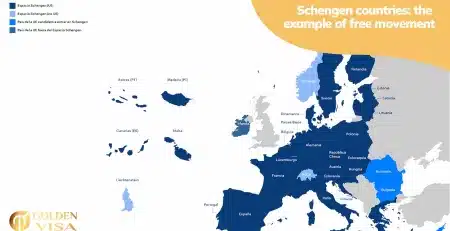Spain has become an important destination for migrants in recent decades. Effective migration management is crucial for integrating newcomers and addressing the opportunities and challenges of migration.
What is Migration Management?
Migration management refers to the policies, processes, and activities undertaken by governments to regulate migration flows and address migration’s impact on economies and societies. It involves establishing legal pathways for migration, integrating migrants, combating irregular migration, and fostering international cooperation.
In Spain, migration management gained importance in the 1990s when the country shifted from being mainly a country of emigration to one of immigration. Joining the EU’s Schengen Area in 1991 led to an increase in migrants arriving in Spain. By 2000, over 1 million immigrants had settled in Spain, transforming the country’s demographics.
To manage this influx, Spain developed strategies to regularize undocumented immigrants and integrate legal migrants. These efforts intensified when immigration reached its peak in the 2000s. By improving migration management, Spain sought to fill labor shortages, support economic growth, and uphold human rights.

What Are the Functions of Migration Management in Spain?
Spanish migration management encompasses the following key functions:
1. Establishing Legal Migration Pathways
The government creates opportunities for legal migration based on labour market needs and family reunification. For example, Spain operates seasonal worker programmes in the agricultural sector and recruits foreign nurses to address labour shortages. Legal channels allow migrants to arrive in Spain through an orderly process, such as the Golden Visa.
2. Integrating Migrants
Integration policies aim to incorporate migrants into Spanish society by providing language education, orientation programs, anti-discrimination laws, and pathways to citizenship. Migrants can access public services like healthcare, education, and social security on par with Spanish citizens.
3. Deterring and Detecting Irregular Migration
Border control and enforcement policies curb unauthorized entry and stay. Those detected without legal status are expelled, though some qualify for regularization programs. Spain uses technology, intelligence sharing, and cooperation with source & transit countries to counter irregular migration.
4. Protecting Migrants’ Rights
Laws and policies uphold migrants’ universal human rights and prohibit exploitative practices like human trafficking. Migrants can access justice, receive legal aid, report abuse, and seek asylum regardless of status. Special programs assist vulnerable migrants like unaccompanied minors.
5. Promoting International Cooperation
Bilateral partnerships on migration with source countries in Latin America, Africa and Eastern Europe aim to foster regular, safe, orderly migration while controlling irregular flows. Within the EU, Spain participates in developing joint migration policies and Burden Sharing initiatives.
6. Informing Policymaking with Research
Data collection and research by agencies like the National Statistical Institute provide insights into immigration trends. Migration policy is adjusted based on demographic reports, labor market analysis, and studies on migrants’ economic and social integration.
Al mejorar la coherencia entre estos diferentes aspectos de la gestión de la migración, España pretende maximizar los beneficios de la inmigración y proteger a los migrantes vulnerables. Aunque sigue habiendo retos, la gobernanza de los flujos migratorios en España ha progresado significativamente. El compromiso regional y mundial continuado puede mejorar aún más la eficacia del sistema de gestión de la migración en España.













Leave a Reply